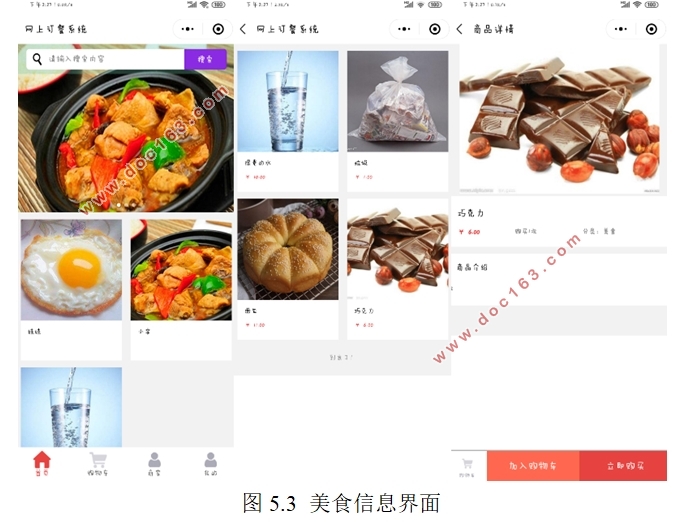基于PythonFlask的网上点餐系统管理员后台开发

基于PythonFlask的网上点餐系统管理员后台开发(任务书,开题报告,论文16000字,参考代码)
摘要
本文主要基于PythonFlask开发网上点餐系统管理员后台,本系统与微信小程序结合,专门针对中小学生点餐难,费时等问题而开发。本系统主要实现了管理员账号管理、用户账号管理、美食信息管理、财务信息管理和微信小程序的数据请求处理五大功能模块。在微信小程序端,顾客可以浏览美食信息,进行美食购买,生成订单;商家可以发布菜品,并进行订单的处理。而后台管理系统在这其中为信息数据浏览和提交提供数据支持。
管理员后台系统设计主要使用Python作为主要语言结合Flask框架编写程序,采用MySQL数据库进行数据表的管理,使用HTML设计Web页面,进行数据展示。
根据需求分析和系统设计来开发本系统,完成了管理员后台系统的构建,实现了预期的基本功能。
关键词:网上点餐;微信小程序;Python;Flask;MySQL
Abstract
This article is mainly based on the python flask development online ordering system administrator background, this system and WeChat small program combined, specifically for the students and students to order food, time-consuming and other issues. The system mainly implements five functional modules: administrator account management, user account management, food information management, financial information management and WeChat applet data request processing.On the WeChat applet, customers can browse food information, make food purchases, and generate orders; merchants can publish dishes and process orders. The back-end management system provides data support for information data browsing and submission. [资料来源:http://doc163.com]
The administrator back-end system design mainly uses Python as the main language to write programs in conjunction with Flask framework, uses MySQL database to manage data tables, and uses HTML to design web pages for data display.
The system was designed and developed according to the requirements analysis and system design, and the administrator back-end system was completed to realize the expected basic functions.
Key Words:online ordering; WeChat applet; Python;Flask; MySQL
[资料来源:http://Doc163.com]



目 录
第1章绪论 1
1.1 目的及意义 1
1.2 国内外的研究现状分析 1
1.3 研究内容 2
1.3.1设计的基本内容 2
1.3.2 拟采用的技术方案 2
第2章系统设计 4 [资料来源:http://doc163.com]
2.1 系统可行性分析 4
2.1.1 技术可行性 4
2.1.2 运行可行性 4
2.1.3 经济可行性 4
2.2 系统需求分析 4
2.2.1 需求分析 4
2.2.2 性能需求分析 7
2.2.3 设计原则 7
2.3系统体系结构 7
2.3.1 B/S架构 7
2.3.2 MVC设计模式 8
2.4 系统流程分析 8
2.5 开发工具及环境介绍 11
2.5.1 Python 11
2.5.2 Flask 12
2.5.3 MySQL 13
2.5.4 开发环境配置 13
2.5.5 服务器部署 14
第3章系统数据库设计 16
3.1 数据库需求分析 16
3.2 数据库概念结构设计 17
3.3数据表设计 19
第4章系统实现 24
4.1 微信小程序 24
[资料来源:http://www.doc163.com]
4.1.1 用户登录 24
4.1.2 在线点餐 25
4.1.3 购物车 25
4.1.4 订单管理 26
4.1.5 商家管理 27
4.2 管理员后台 27
4.2.1管理员登录 27
4.2.2首页展示 29
4.2.3管理员账号管理 30
4.2.4用户账号管理 31
4.2.5美食管理 32
4.2.6财务管理 32
第5章系统测试 34
5.1 测试方法 34
5.1.1 界面测试 34
5.1.2 功能测试 34
5.1.3 性能测试 34
5.2 功能测试 35
5.2.1 微信小程序功能测试 35
5.2.2 后台管理系统测试 40
第六章总结与展望 44
参考文献 45
致谢 46
